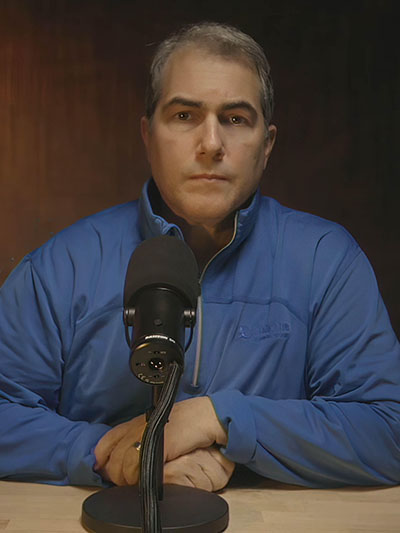
By Phillip Grossman, editor-in-chief at TFT1957: The reason I enjoy the television and film industry and look forward to going to work each day is that it is the perfect intersection between art and science. What does the future of our industry hold?
The Evolution of the TV and Film Industry Over the Past 75 Years
As the age-old adage goes, “the only constant in life is change,” and the television and film industry has seen its share of change over the past 75 years. However, it is the rate of change over the past 5 to 8 years that has been extraordinary.
Moore’s Law, with ever-increasing CPU core counts, has accelerated the shift from ASIC-based to COTS-based solutions in broadcasting
A Look Back: The Technological Advancements in TV Standards
It’s hard for many of us to realize that the NTSC standard was adopted in 1941 (PAL in 1967) and remained in place for over 50 years before SMPTE 259M was adopted in 1989 and started being implemented. This was quickly followed by SMPTE 292M, which defined SDI in 1998 and laid the foundation for HD. Finally, in 2006, SMPTE 424M was adopted, simplifying HD via a single SDI connection at 2.970 Gbps (3G SDI).
With the adoption of UHD/4K, 8K, and OTT, the broadcast industry faces the challenge of integrating new technologies
The Last Decade of Technological Disruption in Broadcasting
If we look back over just the past ten years, we have seen the introduction and adoption of SMPTE 2022-6/7, SMPTE 2110, UHD/4K, 8K, OTT/streaming, virtual production, targeted advertising, and many more adjacent technologies. This accelerated rate of change was further impacted by the global pandemic of 2020, which hastened the adoption of these technologies.
How Moore’s Law and COTS Accelerated Broadcast Technology
We have also seen Moore’s Law in effect, with the ever-increasing core counts in CPUs and increased capabilities of GPUs enabling the transition from purpose-built ASIC/FPGA-based solutions to solutions utilizing common off-the-shelf technology (COTS). The increased capabilities and adoption of COTS-based solutions have assisted in fast-tracking many of the new technologies and capabilities available to our industry.
Cloud-based solutions and AI are set to transform broadcasting, helping to reduce operational costs and increase efficiency
Choosing the Right Technology for Business Growth in Broadcasting
It is easy to see how daunting it may be for engineers and business leaders to sort through all the available technologies to identify which will enable their businesses to grow and be profitable. Which technologies or capabilities will help increase their viewership and reduce operational costs? The good news is there is a lot to choose from, but the bad news is also that there is a lot of technology to choose from, with varying levels of impact on an organization’s bottom line.
The Influence of Tablets and Smart Devices on Viewer Engagement
It used to be that we focused on the “number of eyeballs,” but the number of “eyeballs” has been more or less fixed over the past 15 to 20 years. However, with the release of Apple’s iPad in 2010 and other manufacturers following suit with their own tablets, there was an increase in the amount of time available for companies to attract “eyeballs.” Which technologies will help an organization capture this additional viewership?
While the number of ‘eyeballs’ hasn’t changed, the time available to engage viewers has increased with the rise of smart devices and tablets
IBC2024: The Future of Broadcasting Technology
So here we are on the dawn of IBC 2024 (I believe it’s my 15th) with many companies displaying the latest and greatest technology to help your business optimize and grow. What will we adopt as a standard in our business models (UHD, 8K, streaming, SRT, JPEG XS, AI, etc.)? What technology will help us tell better stories? I don’t believe there are any wrong answers, just less right ones.
In my opinion, I believe we may see a slowing of the rate of change, and the current set of technologies available to the industry will be tested and validated, tending towards new general standards and business models. Things like 8K, XR/AR, and artificial intelligence will become tools more so than standards. I believe we will see larger “ecosystems” being developed by various manufacturers, simplifying the adoption of these new technologies and placing them in the hands of more creators and small up-and-coming broadcasters.
The Intersection of Art and Science in the Future of Television
The reason I enjoy the television and film industry and look forward to going to work each day is that it is the perfect intersection between art and science. What does the future of our industry hold? No one really knows. However, what I do know is that it will be exciting!









